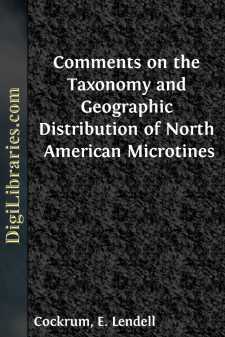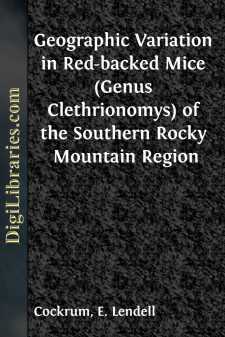Categories
- Antiques & Collectibles 13
- Architecture 36
- Art 48
- Bibles 22
- Biography & Autobiography 813
- Body, Mind & Spirit 142
- Business & Economics 28
- Children's Books 17
- Children's Fiction 14
- Computers 4
- Cooking 94
- Crafts & Hobbies 4
- Drama 346
- Education 46
- Family & Relationships 57
- Fiction 11829
- Games 19
- Gardening 17
- Health & Fitness 34
- History 1377
- House & Home 1
- Humor 147
- Juvenile Fiction 1873
- Juvenile Nonfiction 202
- Language Arts & Disciplines 88
- Law 16
- Literary Collections 686
- Literary Criticism 179
- Mathematics 13
- Medical 41
- Music 40
- Nature 179
- Non-Classifiable 1768
- Performing Arts 7
- Periodicals 1453
- Philosophy 64
- Photography 2
- Poetry 896
- Political Science 203
- Psychology 42
- Reference 154
- Religion 513
- Science 126
- Self-Help 84
- Social Science 81
- Sports & Recreation 34
- Study Aids 3
- Technology & Engineering 59
- Transportation 23
- Travel 463
- True Crime 29
E. Lendell Cockrum
The author has not yet completed their profile.
Author's Books:
Sort by:
In preparing maps showing the geographic distribution of North American microtines, conflicting statements in the literature and identifications that, if accepted, would result in improbable geographic ranges have led to the examination of pertinent specimens with the results given below. The studies here reported upon were aided by a contract between the Office of Naval Research, Department of the...
more...
In studying the kinds of mammals known from Kansas, I had occasion to examine a series of Perognathus flavus from the western part of the state. Comparisons of these specimens with topotypes of named subspecies revealed that the specimens from Kansas belong to a heretofore undescribed subspecies which ranges through western Nebraska, eastern Colorado, western Kansas, and western Oklahoma. This...
more...
In the course of the preparation of a synopsis of the North American terrestrial microtines by one of us (Cockrum), and the completion of a Master's thesis on the geographical variation of the red-backed mice of Wyoming by the other (Fitch) we had occasion to study the red-backed mice of the southern Rocky Mountain region (see figure 1). Results of these studies are the recognition of two...
more...




